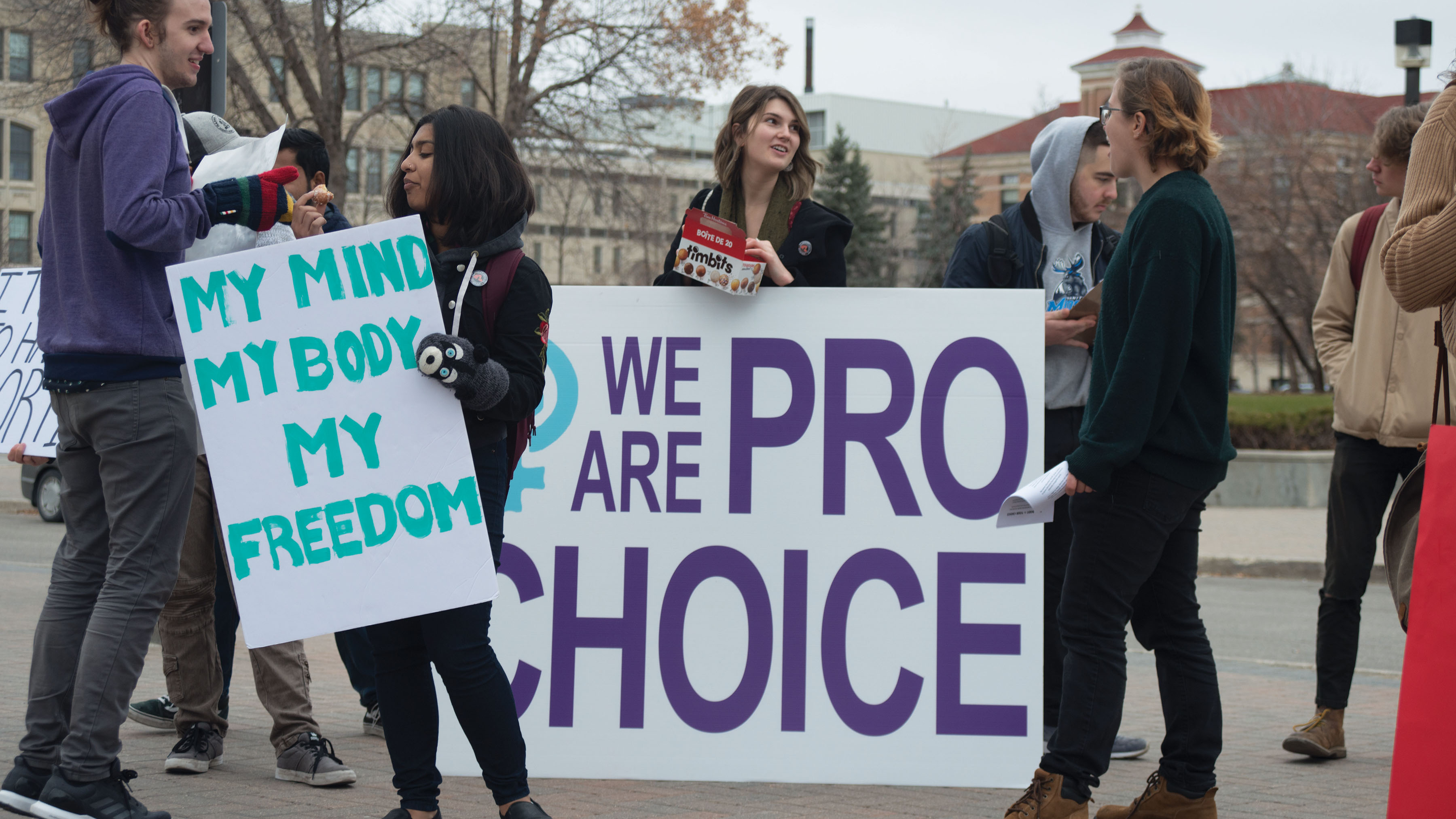UMSU and the Arts Student Body Council (ASBC) both put forward motions last week opposing “coercion” by groups on campus concerning reproductive choices.
The motions come after recent protests by the Revolutionary Student Movement (RSM) in opposition to pro-life campaigning on campus, primarily by the Canadian Centre for Bio-ethical Reform (CCBR).
CCBR has campaigned a pro-life stance several times on campus this year, handing out literature while wearing torso-length billboards featuring graphic images labelled as early-stage aborted fetuses and ultrasounds. The group is not affiliated with the university and is not a student group.
The RSM, which is a student group, responded with pro-choice signage and literature.
The motion from UMSU, which will come to a vote on Nov. 5 and was moved by president Jakob Sanderson, suggests UMSU amend one of its position statements to support “a woman’s right to freedom of reproductive choice; and a woman’s right to be free from coercion or attempted coercion with respect to making reproductive choices,” and oppose “any act of coercion or attempted coercion with respect to making reproductive choices.”
In an email sent out to arts students Monday, ASBC president Julius Chester wrote “recent events at the University of Manitoba have led ASBC to adopt a position that, while respecting the rights and beliefs of groups and individuals, is focused on student safety in the university environment.”
Sanderson said the UMSU motion can be amended, but as it currently stands will focus on opposing coercion specifically, and pro-life groups would be allowed to continue meeting on campus should it pass.
“What UMSU is opposing and prohibiting is coercion, or attempted coercion, of anyone with regards to reproductive choice,” he said.
“So we’re not saying you can’t have pro-life beliefs, you can even still be a student group that has pro-life beliefs, you can hold meetings to talk about issues that are important to you. However, what we don’t want to see any UMSU-affiliated groups doing is using their student group status and their booking status and even potentially funding to coerce or attempt to coerce someone.”
Sanderson added graphic imagery would “definitely not be permissible.”
The UMSU motion states that while the union recognizes the right to free speech, it also acknowledges that right should not be used to violate other groups’ right to feel safe on campus.
Sanderson added that cases of coercion within such groups would be approached on a case-by-case basis, referencing a situation earlier this year in which the U of M pro-life student group Students for a Culture of Life was the cause of complaints from students due to content it was presenting while tabling.
According to Sanderson, the materials were confiscated by UMSU, and after referencing the UMSU safe environment policy, it was determined the group violated the rules and the table bookings were revoked.
“We wanted to sort of establish something a little more clearly on whether this is something that we’re okay with continuing on our campus or not,” he said.
Sanderson noted that while the motion would affect all UMSU-affiliated student groups, CCBR exists outside of that jurisdiction and UMSU would not be able to request they leave campus.
“I really can’t say for sure whether the university, if they had it entirely their way, would like to allow [CCBR’s] demonstrations or not, but what’s been communicated to me is that even if they didn’t, essentially the provincial freedom of expression laws put them in a bind, because this is a public space,” he said.
“So the university doesn’t even have full jurisdiction over that. We certainly don’t.”
The ASBC motion, which was presented by its LGBTTQ* representative Christina Trachenko, would prohibit “graphic images and the targeting of vulnerable individuals” within the arts complex.
Chester explained the possible new bylaw would focus on limiting violent imagery in ASBC spaces, including posters throughout the arts complex.
“Groups who would display insensitive images, not that it was a problem before in the past, but they would not be allowed to present their images in ASBC spaces […] the arts lounge, for example,” he said.
“We would also work with the faculty of arts to ensure that their presence in arts buildings would be, or at least the presence of graphic images, would be limited.”
Chester said he was “made aware” of the UMSU motion by ASBC and UMSU representatives, but the two groups did not collaborate on the motions.
He added ASBC would be voting on the motion “during reading week.”


